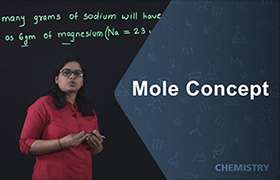CBSE Class 9 Answered
Centrifugation is a process that involves the use of the centripetal force for the separation of mixtures, used in industry and in laboratory settings. More-dense components of the mixture migrate away from the axis of the centrifuge, while less-dense components of the mixture migrate towards the axis. In chemistry and biology, increasing the effective gravitational force on a test tube so as to more rapidly and completely cause the precipitate ("pellet") to gather on the bottom of the tube. The remaining solution is properly called the "supernate" or "supernatant liquid". Since "supernatant" is an adjective, its usage alone is technically incorrect, although many examples can be found in scientific literature. The supernatant liquid is then either quickly decanted from the tube without disturbing the precipitate, or withdrawn with a Pasteur pipette. The rate of centrifugation is specified by the acceleration applied to the sample, typically measured in revolutions per minute (RPM) or g. The particles' settling velocity in centrifugation is a function of their size and shape, centrifugal acceleration, the volume fraction of solids present, the density difference between the particle and the liquid, and the viscosity.
Cyclonic separation is a method of removing particulates from an air (or gas) stream, without the use of filters, through vortex separation. Rotational effects and gravity are used to separate mixtures of solids and fluids
Large scale cyclones are used in saw mills to remove sawdust from extracted air. Cyclones are also used in oil refineries to separate oils and gases, and in the cement industry as components of kiln preheaters.
James Dyson's popular bagless dual and root cyclone vacuum cleaners employ a cyclonic technique.
Differential centrifugation is a common procedure in microbiology and cytology used to separate certain organelles from whole cells for further analysis of specific parts of cells. In the process, a tissue sample is first homogenised to break the cell membranes and mix up the cell contents. The homogenate is then subjected to repeated centrifugations, each time removing the pellet and increasing the centrifugal force. Finally, purification may be done through equilibrium sedimentation, and the desired layer is extracted for further analysis.
Separation is based on size and density, with larger and denser particles pelleting at lower centrifugal forces. As an example, unbroken whole cells will pellet at low speeds and short intervals such as 1,000g for 5 minutes. Whereas smaller cell fragments and organelles remain in the supernatant and require more force and greater times to pellet. In general, one can enrich for the following cell components, in the separating order in actual application:
- Whole cells and nuclei;
- Mitochondria, lysosomes and peroxisomes;
- Microsomes (vesicles of disrupted endoplasmic reticulum); and
- Ribosomes and cytosol.











